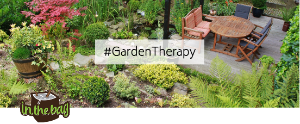There are a whole slew of reasons for being anti-grass at the cottage: the upkeep can be a hassle (and use up a lot of precious water), especially if your lawn gets a lot of pet and foot traffic; if you’re by a lake, chemical fertilizers and pesticides—not to mention the excrement of Canada geese attracted to the turf—can run into the lake; and then there’s the fact that your property might not even be conducive to sprouting the green stuff. Whatever the reason, here are some great grass substitutes that are easier to maintain and more environmentally friendly.
Clover
An excellent green alternative for the cottage, clover is a weed you want: it has deep roots and doesn’t require much watering. It also self-fertilizes by absorbing nitrogen from the air and depositing it into the ground, and it prevents undesirable weeds like dandelions and crabgrass from growing, so you don’t need to use pesticides. In other words, clover is super low-maintenance and a dream groundcover. Clover thrives in areas where grass has a hard time growing—namely, shady and dry land—so it’s especially good if you’ve had trouble trying to keep grass alive in the first place. It’s not great for heavy foot traffic but can tolerate a moderate amount.
Best bet: White dutch clover (trifolium repens). It mows well (when scarcely needed), stays green during drought, and survives in poor soil.
Hardy Moss
Another ideal alternative for shady-but-moist patches of land, moss is easy to cultivate and can handle a lot of foot traffic. It controls erosion and adds some personality to areas where other plants can’t grow. If you are into landscaping, it’s good to use this on or in-between rocks, since it doesn’t have roots. But remember: If you introduce moss to a new area, you must make sure the environment is the same as where it originally came from in order for it to flourish.
Best bet: Sheet moss (hypnum). It’s low and dense, which makes it a favourite for those who are lazy about upkeep.
Thyme
With a pleasant fragrance, thyme doesn’t require mowing or fertilizing and can withstand moderate foot traffic. It only requires watering if there is a drought and it loves sunshine. However, it’s slow to spread and isn’t exactly the cheapest option, so filling a large plot will take either patience or a serious budget. For optimal growth, use a sandy, dry soil and expect to weed aggressively during the first year.
Best bet: Elfin thyme (thymus serpyllum). It’s pretty drought-tolerant and blooms with pink flowers in the summer.
Mazus
Perfect for sunny or partly shaded areas, mazus has stems that root and spread as they creep along. It’s a lovely evergreen grass substitute, forming a dense carpet of green, with blooms in the spring and summer. Mazus favours moist soil, so make sure it receives enough water in dry climates. It’s low-growing and can bear a bit of daily foot traffic.
Best bet: White creeping mazus (mazus reptans ‘albus’). It sprouts pretty, small flowers and prefers hot, humid summers.


